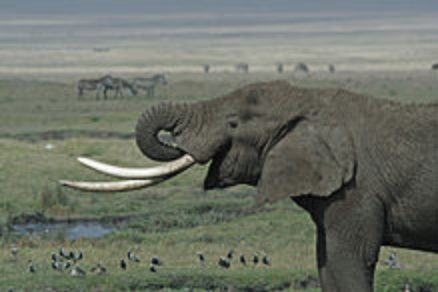Over the past couple of decades, the elephant population has whittled down to about 400,000. Elephants have been poached, or killed for the ivory in their tusks, at a rate of about 50,000 per year. Within the next decade or so the species could become extinct.
It is now more crucial than ever to eradicate ivory trafficking. A new study published in Science in 2018 demonstrated that it is possible to use DNA testing from ivory to pinpoint poaching hotspots.
The scientists surveyed 38 different ivory seizures from 2006 to 2015. Upon observation, they noticed that most of the tusks were unpaired, meaning that the matching tusk from the same elephant was not present. While most tusks are found unpaired, if they were shipped by a large cartel there is a high likelihood that their match is in another shipment by the same cartel.
Thus, the larger the cartel is the larger the share of the trade they obtain so both tusks should have a high likelihood of being acquired and exported by the same cartel. Conversely, the size of the cartel should be reflected in the number of genetically matched tusks connecting multiple shipments.
Tusks were separated based on color, diameters of the base, distance from the gum line, writings on them, burn marks, and other distinguishing features. These tusks were then tested for 16 different nucleotide sequences on their DNA, like a detective analyzing a fingerprint or a piece of hair found at a crime scene.
Tusks were considered a match if they had identical DNA sequences confirmed at 10 or more of the 16 nucleotide sequences examined. 26 total matches were obtained.
By comparing these matches with the geographic location, time, and circumstances in which they were seized, researchers were able to identify three major export cartels in Africa operating from 2011 to 2014. Directly targeting these cartels could have a major impact on the illegal ivory trade by preventing contraband from transiting out of Africa before it becomes far more diffuse and expensive to trace.
While this discovery provides hope for the elephant population, the effectiveness of geographic origin and sample matching methods to target Africa’s major ivory traffickers depends on the willingness of countries making large seizures to submit samples for DNA analysis as close as possible to the time of the seizure.
To date, the compliance of countries supplying these samples for genetic analyses has been poor. Hopefully these findings will stimulate countries to make these contributions and the elephant population will be conserved.
Categories:
Tigra Scientifica: DNA Analysis Uncovers Ivory Cartels in Africa
Caroline Fields, Contributor
December 2, 2018

Courtesy of Wikipedia
By comparing these matches with the geographic location, time, and circumstances in which they were seized, researchers were able to identify three major export cartels in Africa operating from 2011 to 2014.
0
Donate to The Tiger
Your donation will support the student journalists of Clemson University. Your contribution will allow us to purchase equipment and cover our annual website hosting costs.
More to Discover








